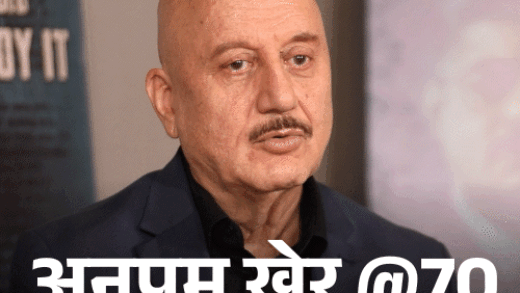Odisha, India – Ajay Rout is an Indigenous farmer in a remote village in a southern district of India’s Odisha state.
The village is surrounded by forest and hills with the nearest market 10km (6.2 miles) away.
The 34-year-old grows sweetcorn and vegetables on his 0.2 hectares (0.5 acres) for both his family to eat and to sell at the market.
Rout said this income is a pittance, so he has taken up growing cannabis, a banned drug, for a better income.
He has about 1,000 cannabis plants located deep in the hills, which require a trek of at least two hours each way to get to because the path is full of boulders and rocks, making it almost impossible for him to ride his bicycle or motorcycle.
The cultivation of cannabis – also known as hemp, marijuana, weed and ganja – is legal for medicinal use in only several states, including Uttarakhand, Gujarat, Madhya Pradesh, Uttar Pradesh and Jammu. Odisha is not one of them.
India had no legislation on narcotic substances until November 1985 when it brought in a law including a ban on the use of cannabis.
The Narcotic Drugs and Psychotropic Substances Act, 1985, makes it illegal for a person to cultivate, possess, sell, buy and consume narcotic and psychotropic substances and doing so can lead to severe fines and imprisonment of up to 20 years.
Risky but profitable
Rout, who has been in this business for the past eight years, served three months in prison in 2017 and has been out on bail ever since. The income from the business, huge for him, overcomes the fear of being involved in it.
“We live in a hilly terrain where traditional farming has a very limited scope. I hardly earn 30,000 rupees [$357] a year by growing vegetables and sweetcorn whereas I can easily make 500,000 rupees [$5,962] in just five to six months in cannabis cultivation,” he told Al Jazeera after being assured that his real name would not be disclosed.
Rout said he and other cannabis growers generally choose remote locations in the hills for their plantations to protect themselves from police raids. “We are lucky to live amidst hills as cops don’t raid here as the path is too difficult to trek and reach the plantation area,” he said.
The planting season starts at the end of July. Typically, it takes five months for the flowers to grow, which are then plucked, dried under the sun, packed and sold to traders. An 8- to 10ft-tall (2.4- to 3-metre-tall) plant produces 1kg (2.2lb) of cannabis at a cost of about 500 to 600 rupees ($5.8 to $7) per kilogramme. Farmers sell that to traders for 1,000 to 1,500 rupees ($12 to $18) per kilogramme.
“But all the trees do not give similar production and most of them bear no flowers at all. Excessive rains are harmful for the crop,” said Deepankar Nayak, 37, a farmer.
Change in lifestyle
Cannabis cultivation, even though banned in Odisha, is a highly lucrative business for the farmers and has brought them overnight riches.
Subhankar Das, 38, who lives in the same village as Rout, told Al Jazeera that he recently changed the flooring in his house from concrete to marble tiles with the income from the illegal trade. He has also bought three motorcycles. His children are enrolled in local language schools, but he is planning to shift them to English language schools, which are a lot more expensive.
“I can even buy four-wheelers and can build a palatial house, but we have to refrain from such activities as it would bring us on the radar of cops who are always on alert to nab us and destroy our fields,” Das added. “Still, some among us have purchased four-wheelers.”
NK Nandi, founder of SACAL, a nonprofit working in weed-growing districts, said he has witnessed the change in the lifestyle of the farmers.
“We started work in 2000 in the districts where cannabis is grown and the locals, mostly tribal, hardly had two-wheelers and lived in mud houses. The marriages were simple and as per their tribal traditions. But everything has undergone a sea change in the past eight to 10 years,” Nandi said.
“Each tribal family has not only purchased two to three motorcycles but has also built concrete houses. They carry out marriage ceremonies like they are done in other parts of the country and spend lavishly and invite several guests. The decline of rebel insurgent activities in these areas along with better transport connectivity has also helped traders to reach them,” helping expand the market for this banned product, he said.
Police raids
Cannabis cultivation is currently active in six districts of Odisha state: Koraput, Malkangiri, Rayagada, Gajapati, Boudh and Kandhamal, all of which have mountainous and hilly terrain.

Senior state police officials told Al Jazeera they are putting in their best effort to stop the illegal trade and have seized about 600 tonnes of cannabis in the three years until 2023, goods worth $200m, and have also arrested 8,500 drug traffickers. Of that drug haul, police got their largest one-time catch last year when they seized 185,400kg (408,737lb) of cannabis worth about $55m.
The police have also destroyed about 28,000 hectares (70,000 acres) of cannabis plantations in Odisha from 2021 to 2023, the highest for cannabis in the country, JN Pankaj, a former inspector general of the Special Task Force of the Odisha Police, told Al Jazeera.
In the first seven months of 2024, his team seized 102,200kg (225,312lb) of cannabis worth about $30m, he said.
“We use drones and even satellite images to track the planting areas and destroy them. The challenge for us is not the hilly terrains but the use of landmine explosives in these areas,” which have traditionally been hideouts for rebel groups, Pankaj said, adding: “That poses a severe risk to the lives of our team.”
And even though his team has cut down the plantation areas to eight from 12 a few years ago, the huge demand and astronomical prices this drug fetches are helping the trade thrive, he said. For instance, while traders procure cannabis from farmers for about 1,000 rupees ($12) per kilogramme, it is sold at 25,000 rupees ($298) per kilogramme in the big cities of India.
Alternative livelihood
Several farmers who were earlier involved in this trade conceded to Al Jazeera that they had quit due to excessive police patrolling.

“They come and destroy our plantation, causing severe losses to us, and also make arrests. We cannot afford to spend too much money in legal expenses and don’t want the disruption to family life,” said Prabhat Rout, 50, a farmer in southern Odisha who, after five years of cultivating cannabis, switched to growing millet instead.
“Though it’s not as profitable as weed, it is free from any headache,” he explained.
Millet is an ancient grain in some parts of southern India that federal and state governments are trying to revive.
Odisha offers free seeds for sowing, and the state purchases the crop from the farmers, incentives that have helped lure farmers to the crop and make Odisha a significant player in millet production.
For Rout, however, no cultivation can match the profit of cannabis. “The farmers are shifting out of fear, but the income from millets cannot match the profit from cannabis. I am taking the risk as it’s worth it,” he said as he starts the tough trek to his fields under cloud-filled skies.
Editor’s note: The names of all the farmers in the story have been changed to protect their identities.
Source link
#Indias #east #farmers #risk #jail #grow #lucrative #cannabis #crop


















